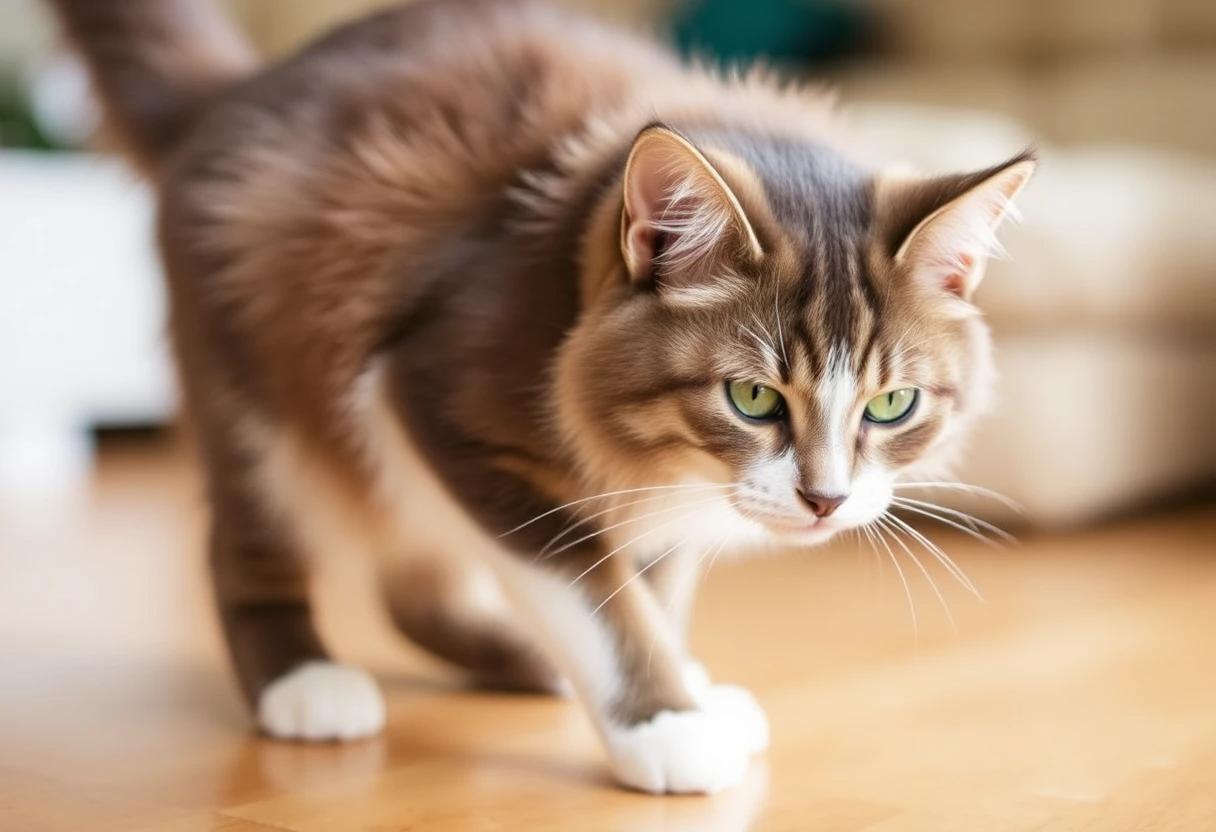Decoding Cat Behavior: What Their Actions Mean for Care
Cats are fascinating creatures with a unique way of communicating their needs and emotions. From subtle tail movements to dramatic zoomies, every action your feline friend takes has meaning. Understanding these behaviors is essential for providing proper care and strengthening your bond.
In this guide, we’ll explore common cat behaviors, what they mean, and how to address them to ensure your cat is happy and healthy.
Table of Contents
- The Importance of Understanding Cat Behavior
- Common Cat Behaviors and Their Meanings
- Unusual Behaviors and Their Implications
- How to Respond to Common Cat Behaviors
- Tips for Encouraging Positive Behavior
- When to Seek Professional Help
- Conclusion

The Importance of Understanding Cat Behavior
Cats may not speak our language, but their actions convey a wealth of information. Understanding their behaviors allows you to:
- Detect potential health issues.
- Respond to their emotional needs.
- Create a comfortable and enriching environment.
- Strengthen the bond between you and your pet.
By decoding your cat’s behavior, you can better care for their physical and emotional well-being.
Common Cat Behaviors and Their Meanings
1. Purring
Meaning:
Purring is often associated with contentment, but cats also purr when they’re in pain or anxious as a way to self-soothe.
How to Respond:
- If your cat purrs during cuddles, it’s likely a sign of happiness.
- If purring accompanies signs of distress, consult your veterinarian.
2. Kneading
Meaning:
Kneading is a behavior kittens use to stimulate milk flow from their mothers. Adult cats knead to show comfort, mark territory, or prepare a sleeping spot.
How to Respond:
- Let your cat knead, but protect sensitive areas with a blanket if their claws are sharp.
- Ensure their environment feels safe and secure.

3. Zoomies
Meaning:
Zoomies, or sudden bursts of energy, often occur when a cat feels playful or after long periods of rest. They can also indicate pent-up energy.
How to Respond:
- Engage your cat with interactive toys to burn off energy.
- Ensure they have opportunities for physical activity throughout the day.
4. Tail Movements
Meaning:
- Upright tail: Happiness or confidence.
- Puffed-up tail: Fear or aggression.
- Whipping tail: Irritation or agitation.
How to Respond:
- Respect their mood based on tail signals.
- Give them space if they appear upset.
5. Scratching
Meaning:
Scratching is a natural behavior used to sharpen claws, mark territory, and stretch muscles.
How to Respond:
- Provide scratching posts or pads.
- Redirect unwanted scratching to appropriate surfaces using positive reinforcement.

Unusual Behaviors and Their Implications
1. Excessive Grooming
Potential Issue: Stress, allergies, or skin conditions.
Action: Identify triggers and consult a veterinarian if needed.
2. Hiding for Long Periods
Potential Issue: Anxiety, illness, or environmental changes.
Action: Create a safe space and observe for other signs of distress.
3. Aggression Toward Humans or Pets
Potential Issue: Fear, pain, or territorial behavior.
Action: Identify triggers and use calming techniques. Seek professional advice if aggression persists.
4. Loss of Appetite
Potential Issue: Illness, dental problems, or stress.
Action: Consult a veterinarian if appetite doesn’t return within 24-48 hours.

How to Respond to Common Cat Behaviors
- Positive Reinforcement: Reward desired behaviors with treats, praise, or playtime.
- Consistency: Maintain routines to make your cat feel secure.
- Patience: Avoid punishment, as it can lead to fear or aggression.
Tips for Encouraging Positive Behavior
- Provide Enrichment: Offer toys, climbing structures, and interactive games to prevent boredom.
- Designate Safe Spaces: Create quiet areas where your cat can retreat when overwhelmed.
- Ensure Proper Socialization: Gradually introduce new people, pets, or changes to their environment.
- Keep Their Environment Clean: Regularly clean litter boxes, bedding, and feeding areas.
- Monitor Health: Regular vet check-ups can rule out medical causes of behavioral changes.
When to Seek Professional Help
Sometimes, unusual or problematic behaviors require expert intervention. Contact a veterinarian or feline behaviorist if:
- Behavioral changes are sudden and unexplained.
- Aggression or anxiety disrupts your household.
- Medical issues are suspected.
Professional guidance can help address underlying issues and restore harmony.
Conclusion
Understanding your cat’s behavior is key to providing exceptional care and strengthening your bond. By observing their actions and responding appropriately, you can ensure your feline friend feels safe, happy, and loved.
Every meow, tail twitch, and purr is part of their unique language—one that deepens the connection between you and your pet. Decoding their behavior allows you to become a more attentive and compassionate caregiver.